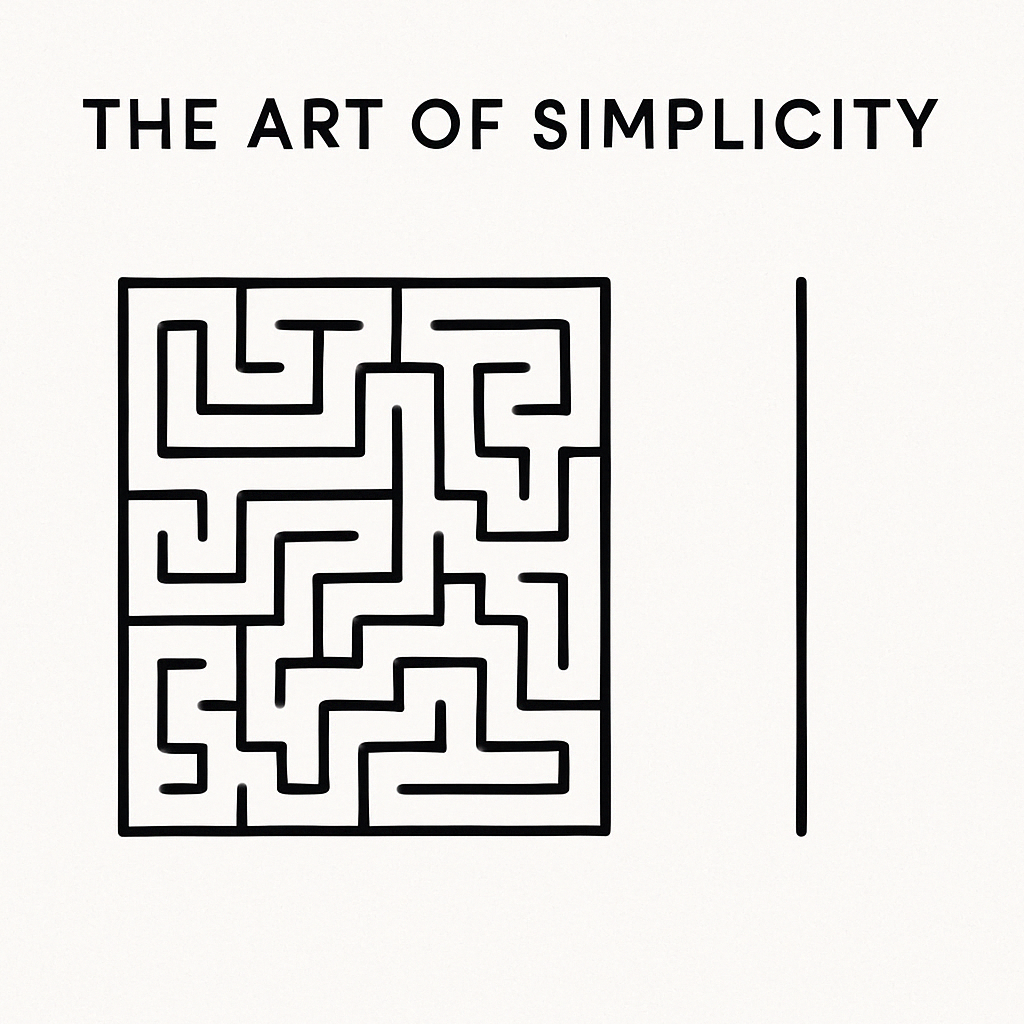In the world of software development, there’s an invisible shift that happens with experience — not just in skills, but in mindset. Early in our journey, we often chase complexity, believing that more layers, more code, and more architecture mean better solutions. But with time, we begin to realize that the most elegant solution is usually the simplest one.
The Novice’s Path: Complexity as Proof
New developers, fresh from tutorials, bootcamps, or university, are often eager to prove themselves. Faced with a new project, their instinct is to reach for every tool they’ve learned: microservices, design patterns, Docker containers, Redux, tail recursion — all at once. The result is often a highly abstracted, over-engineered solution to what was, in essence, a simple problem.
Why does this happen? It’s not a lack of intelligence. It’s the opposite — it’s enthusiasm combined with the need to demonstrate depth. Complexity feels like expertise. If a system is complicated, it must be smart, right?
But this mindset often leads to projects that are brittle, hard to debug, and difficult for others to understand. What starts as a creative endeavor turns into a maze of interdependencies and technical debt.
The Experienced Developer: Simplicity as Mastery
The senior developer approaches the same problem very differently. They’ve learned — often the hard way — that complexity is easy, but simplicity is hard. It takes real skill to distill a solution down to its essential parts. To ignore the noise and build only what’s needed.
Instead of diving into frameworks, they start by asking:
“What are we actually trying to solve?”
Then they write code that is clean, purposeful, and minimal. The result may not look impressive at first glance — but it will work, it will scale (when needed), and most importantly, it will be understood by others.
Their focus isn’t to impress, but to serve the problem. They rely on tested patterns, intuitive logic, and thoughtful design. They comment sparingly, because the code itself tells the story.
This Is Not Just About Code
This shift from complexity to simplicity isn’t limited to development. It mirrors life itself.
When we’re younger, we often overthink. We over-plan. We say yes to too many things, thinking that more is always better. But as we gain experience, we begin to appreciate what’s essential — in projects, in people, in goals. We start removing things instead of adding them.
We start simplifying.
And that’s where clarity emerges — in life, as in code.
Simplicity Is Not Laziness — It’s Design
There’s a misconception that choosing a simple solution means choosing the easy way out. But in reality, simplicity is the result of deep understanding. It means you’ve thought through the edge cases, weighed the options, and deliberately chosen the most direct path.
Albert Einstein famously said:
“Everything should be made as simple as possible, but not simpler.”
That balance — not less than needed, not more — is the heart of software craftsmanship.
The Principle I Work By
On every project I touch — whether it’s a small feature or a full system — I return to this idea:
“The best solution is the simplest one.”
It’s a compass that keeps me focused. It helps me avoid the trap of overengineering. And more importantly, it leads to work I’m proud of — not because it’s flashy, but because it lasts.



